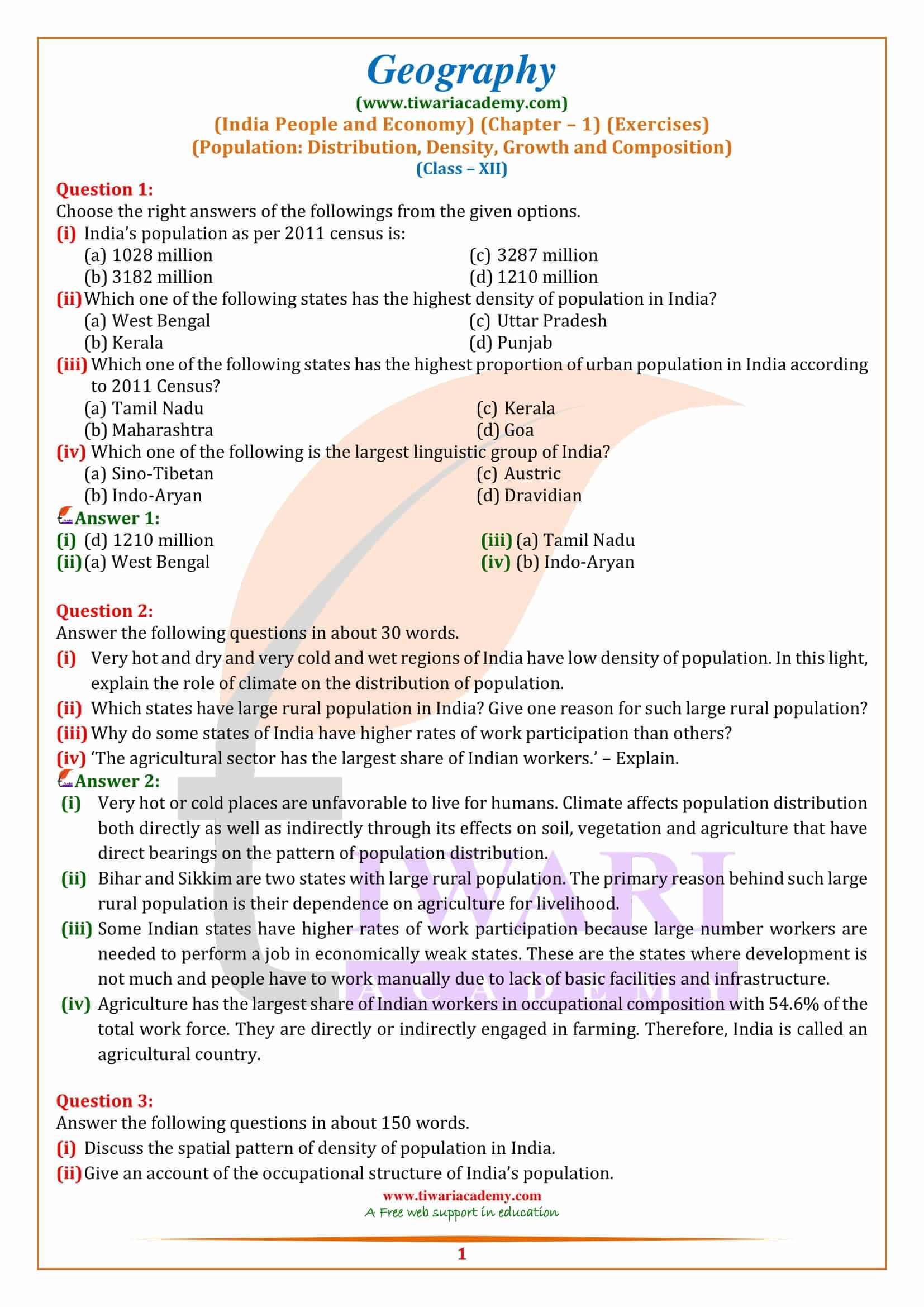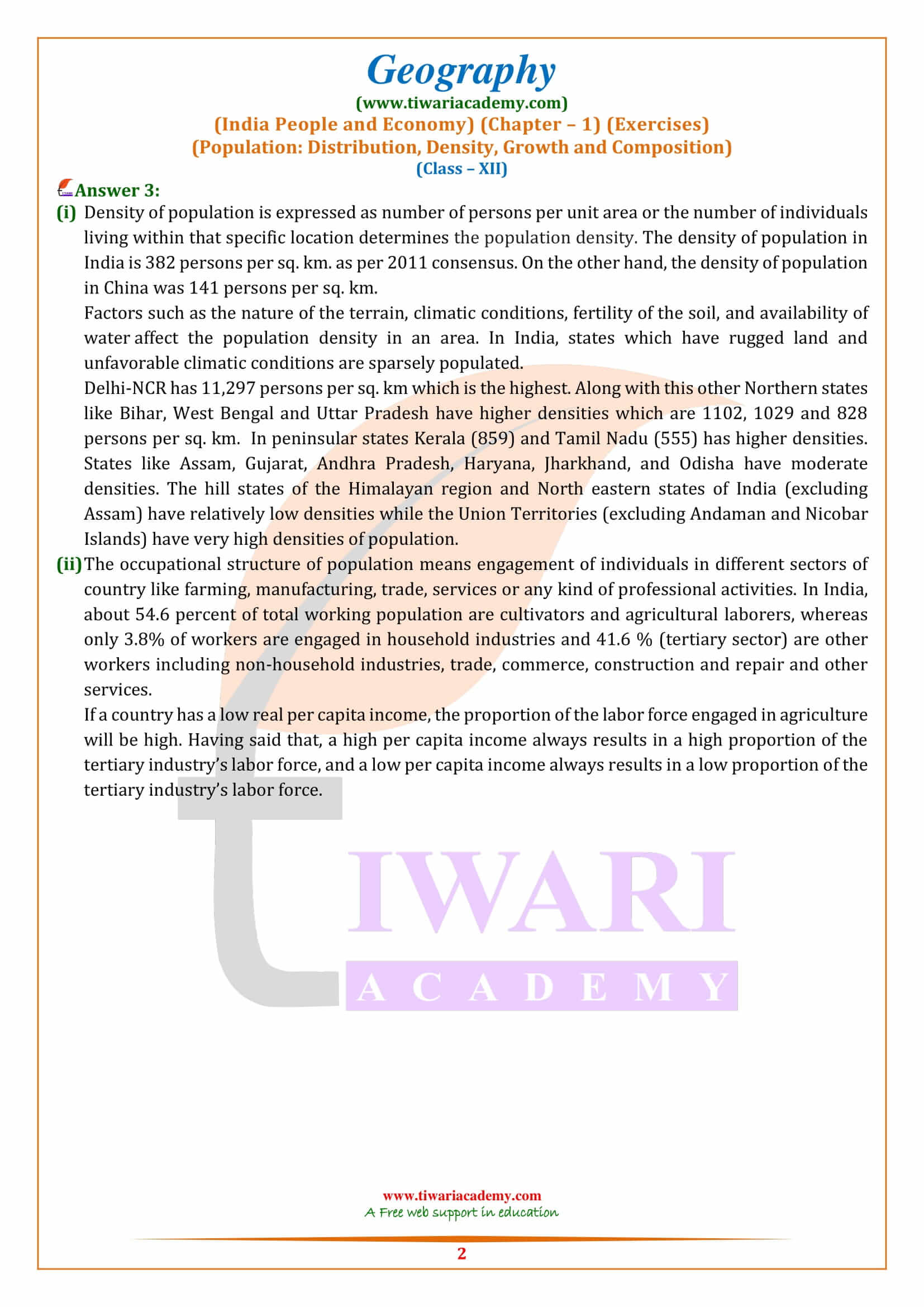NCERT Solutions for Class 12 Geography Chapter 1 Population Distribution, Density, Growth and Composition in English and Hindi Medium for session 2025-26. Get here all the question answers of 12th Geography chapter 1 from India People and Economy Unit I.
NCERT Solutions for Class 12 Geography Chapter 1
Class 12 Geography Chapter 1 Population Distribution Question Answers
Why do some states of India have higher rates of work participation than others?
Some Indian states have higher rates of work participation because large number workers are needed to perform a job in economically weak states. These are the states where development is not much and people have to work manually due to lack of basic facilities and infrastructure.
Very hot and dry and very cold and wet regions of India have low density of population. In this light, explain the role of climate on the distribution of population.
Very hot or cold places are unfavorable to live for humans. Climate affects population distribution both directly as well as indirectly through its effects on soil, vegetation and agriculture that have direct bearings on the pattern of population distribution.
Which states have large rural population in India? Give one reason for such large rural population?
Bihar and Sikkim are two states with large rural population. The primary reason behind such large rural population is their dependence on agriculture for livelihood.
The agricultural sector has the largest share of Indian workers.– Explain.
Agriculture has the largest share of Indian workers in occupational composition with 54.6% of the total work force. They are directly or indirectly engaged in farming. Therefore, India is called an agricultural country.
Class 12 Geography Chapter 1 MCQ
India’s population as per 2011 census is
Which one of the following states has the highest density of population in India?
Which one of the following states has the highest proportion of urban population in India according to 2011 Census?
Which one of the following is the largest linguistic group of India?
Discuss the spatial pattern of density of population in India.
Density of population is expressed as number of persons per unit area or the number of individuals living within that specific location determines the population density. The density of population in India is 382 persons per sq. km. as per 2011 consensus. On the other hand, the density of population in China was 141 persons per sq. km.
Factors such as the nature of the terrain, climatic conditions, fertility of the soil, and availability of water affect the population density in an area. In India, states which have rugged land and unfavorable climatic conditions are sparsely populated.
Delhi-NCR has 11,297 persons per sq. km which is the highest. Along with this other Northern states like Bihar, West Bengal and Uttar Pradesh have higher densities which are 1102, 1029 and 828 persons per sq. km. In peninsular states Kerala (859) and Tamil Nadu (555) has higher densities. States like Assam, Gujarat, Andhra Pradesh, Haryana, Jharkhand, and Odisha have moderate densities. The hill states of the Himalayan region and North eastern states of India (excluding Assam) have relatively low densities while the Union Territories (excluding Andaman and Nicobar Islands) have very high densities of population.
Give an account of the occupational structure of India’s population.
The occupational structure of population means engagement of individuals in different sectors of country like farming, manufacturing, trade, services or any kind of professional activities. In India, about 54.6 percent of total working population are cultivators and agricultural laborers, whereas only 3.8% of workers are engaged in household industries and 41.6 % (tertiary sector) are other workers including non-household industries, trade, commerce, construction and repair and other services.
If a country has a low real per capita income, the proportion of the labor force engaged in agriculture will be high. Having said that, a high per capita income always results in a high proportion of the tertiary industry’s labor force, and a low per capita income always results in a low proportion of the tertiary industry’s labor force.



